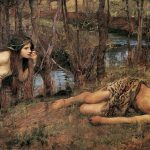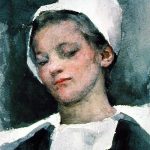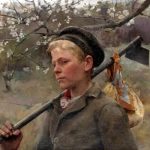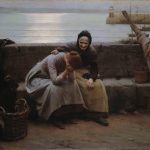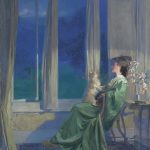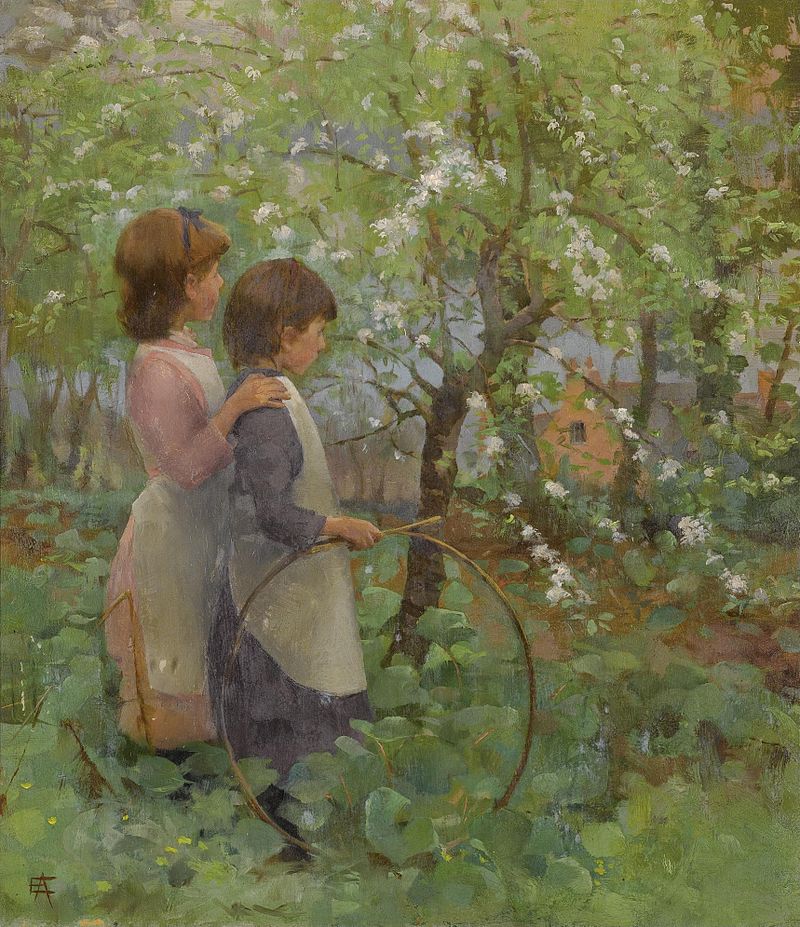
In the autumn of 1885, Elizabeth Adela Forbes (still named Armstrong at the time) and her mother moved to Newlyn, Cornwall. She established a studio in Newlyn, sharing the building with a fisherman who stored and repaired nets in the space.
She won a medal at the Paris International Exhibition in 1891 and a gold medal for an oil painting at the World’s Columbian Exposition in Chicago in 1893. Between 1893 and 1899 she participated in more than 63 exhibitions in London.
After Newlyn, Armstrong lived in St. Ives, where she met Stanhope Forbes, whom she married in 1889. Going against societal roles for married women, Elizabeth Forbes continued to be an active and successful artist after marriage. Further, in 1899 she and her husband Stanhope Forbes opened the Newlyn Art School.
They also were instrumental in the creation and ongoing success of the new Passmore Edwards Art Gallery at Newlyn, also known as the Newlyn Art Gallery (NAG). Her works of art, many of them of children, including her son Alec, were influenced by French realism. She was a successful artist, more successful than some of her male counterparts and had a national reputation, most commonly associated with the Newlyn School, or Forbes School.
Newlyn Success
The Newlyners gained popular approval because their subject matter fell into the traditional and still vital categories of Victorian genre painting. They also depicted the positive and nostalgic image of provincial life and the moral values their urban audience desired.
Exterior scenes incorporating recognizable sites and local, nonprofessional models distinguished Newlyn work.— Sally Mitchell, Victorian Britain
Forbes held an exhibition called Children and Child Lore in London at the Fine Art Society in 1900. The main character based upon her friend Thomas Cooper Gotch, Forbes wrote and illustrated King Arthur’s Wood, a children’s book for her son that was published in 1904.
She founded The Paper Chase, edited by her friend F. Tennyson Jesse in 1908 and wrote poetry. In 1910 at the Royal British Colonial Society of Artists Exhibition, Forbes won the merit award.
Following her death her works were shown in 1990 to 1991 in the “Four Centuries of Women’s Art: The National Museum of Women in the Arts” exhibition and a retrospective of her works held at the Penlee House Gallery and Museum in 2000 entitled “Singing from the Walls: The life and work of Elizabeth Forbes.” Source: Wikipedia

